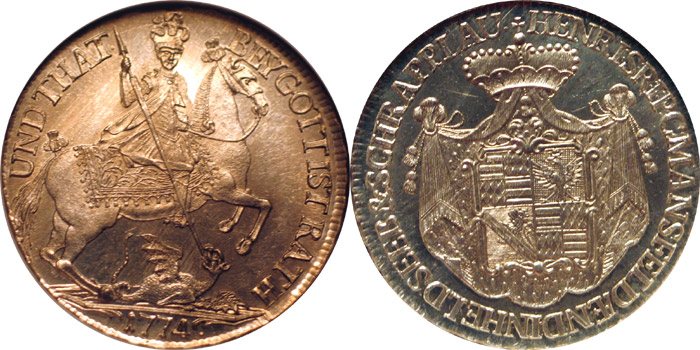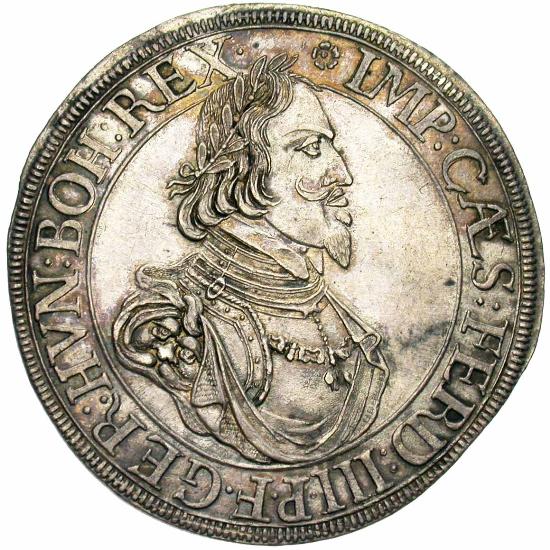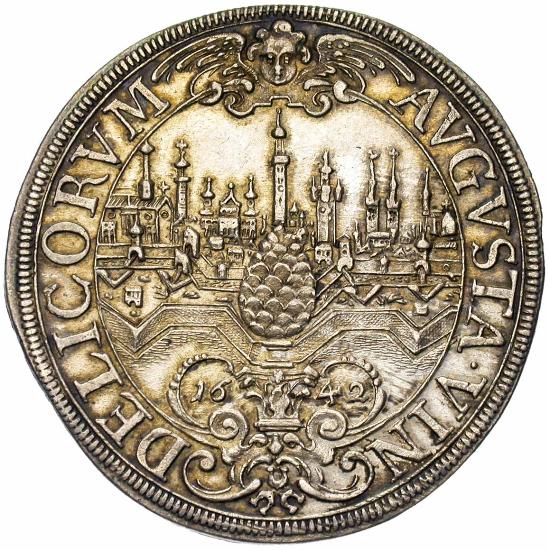-
When you click on links to various merchants on this site and make a purchase, this can result in this site earning a commission. Affiliate programs and affiliations include, but are not limited to, the eBay Partner Network.
-
Posts
17,367 -
Joined
-
Last visited
-
Days Won
4
Content Type
Profiles
Forums
NGC Journals
Gallery
Events
Store
Downloads
Posts posted by gmarguli
-
-
If you guys understood how much value has been transferred FROM collectors TO coin doctors and crackout artists over the past decade, you might be a bit more receptive to CAC. I would guesstimate it's in the 8 figure range [hundreds of millions of dollars].
Crackout artists are demons. They have the nerve to use their knowledge and risk their capital to try and make a profit. Sickens me. These people are worse than child rapists!
-
Let's assume I own a pig with a CAC sticker. I believe I can force some CAC market makers to buy the coin. However, I don't believe there are market makers for all the coins, so that may be an issue.
Now the market maker that I forced the coin upon can turn the coin over to CAC. CAC is under no obligation to buy it back. They can look at the pig and say it is OK. The market maker is stuck holding this pig. He can force it on to another market maker or sell it to a collector. CAC is in no way forced to buy the coin back. They make the decision if it is worth buying back just like the TPG.
This is also similar to Bluesheet coins. I can "hit the bid" for many coins and force them upon the sight unseen buyers. These buyers are stuck with pigs if the TPG says they are OK for the grade.
-
When PCGS began in February 1986 – NGC started in later 1987 – we essentially inherited a market structure with very high published prices. Morgan $1s in MS-65 were $800! Graders can’t help but be affected by the market. Here I am grading at NGC in 1987/88 with a nice Morgan $1 in my hands. If I call it MS-65 it’s going to be worth $500+. Many of those coins were MS-66s at the least. It was tough to grade the coin knowing it would command $500+. Market grading forced the tighter grading. If bid were, say, a more market-reflective $200, then a lot of coins that didn’t grade MS-65 would have. The market actually adjusted as MS-64s traded for that $200.
What bull mess! John admits not to grading the actual coin, but rather deciding if the submitter deserves to make that much money. This coin is clearly an MS66+, but I'll call it an MS64 as it should be a $200 coin?
I'm sorry, but if a grader handed me back the coin I PAID them to grade and said, it's an MS66 at least, but that would command $X which is too much in my opinion, so I market graded it MS64, I'd kick him in the nuts.
Perhaps John (and others who have made this same comment) should understand that their job is to certify the grade of the coin, not try to determine how much money the coin should sell for. It's mess like this that causes grades to be all over the place. Place the blame on John for this! Next time he talks about overgrades and undergrades, tell him his BS market grading and his failure to do his job is directly responsible for this problem that he wants us to pay him to clean up. If all the graders ever did was grade the coin based on the condition of the coin, the market would adjust and function normally over time. Too bad the some of the graders like to play god and tamper with the free market by screwing around with the grades.
If we consider market grading, and you’re sitting in the grading room when looking at a MS-65 Morgan $1 that came down from $800 to $80, and you’re doing a competent job, you’re grading a coin differently at $80 than you were when it was $800.No, you're doing a competent job if you grade that coin MS65 and don't let the value play a role in determining that grade. I don't have any grading reference books with me right now, but I can't recall ever seeing VALUE as one of the determining factors in grading. Maybe I missed that?
That Natural process allows the grader to be more relaxed when grading. He might be thinking, “The coin has a couple marks, but it’s okay for a 65.” He’s justified to do that but it lead to gradeflation. It wasn’t a conscious attempt of the services to do this; they reacted to the market.If the grader said “The coin has a couple marks, but it’s okay for a 65.” then I don't see where gradeflation comes in. The grader said the marks on the coin were OK for the MS65 grade. Sounds good to me. It wouldn't sound good to me if the graders said the coin has the marks of an MS65, but bid is currently too high on MS65, so let's call it MS63.
To help hold the line on grading, I believe that grading or reference sets are necessary at the services. You don’t have to have one for every series. Say for Liberty Seated and Barber coins one coin in every grade irrespective of denomination would suffice. A skilled grader can extrapolate. Graders should spend 30 to 60 minutes each week looking at the set – a tune-up in which they recalibrate their mind-set to avoid getting into a rut. To me, this is very important.I've never really understood this. The graders at the TPG are generally considered near the top of the game when it comes to grading. And we're supposed to believe that they somehow forget how to grade and need a refresher course to remind them of what an MS64 should look like?
Oh yeah, does CAC have a grading set? :shrug:
MR: How can you hold the line on your grading such that your interpretations won’t change over time, as has happened for the grading services.JA: Let’s say that we do a poor job. If we do than we have to buy our own coins back and we wouldn’t last very long. We could have $25 million of low-end unsalable inventory and be out of business. So it’s in CAC’s best interest to maintain the standard because we are consuming our own product. It’s like owning a restaurant where we eat every meal, so we’re not going to be serving poor quality food. Or it’s like a prospective home buying desiring to buy a “builder’s home.” Why is that? – because he built it for himself. In effect, we’re grading for ourselves.
But the CAC gets to be the determining party in whether they screwed up. This is no different than what the TPG do. Or does the CAC have an outside organization that reviews their coins for them like John suggested for the TPG? Only seems fair!
MR: What makes you so confident to say that gradeflation has ended?JA: I’m not a submitter but if you were to speak to dealers who submit many coins they would tell you that in the last six months or so grading has tightened. I’ve heard the theory that CAC is responsible for that, another is rising prices. If I’m in the grading room, I’m supposed to be immune to prices; but, if a Bust Quarter is $13,000 versus $25,000 I believe you look at the coin differently. The 1922-P $20 at $5,000 bid has to look different than then it was below $2,000.
The dealers who submit large quantities of coins are ALWAYS saying that the TPGs have tightened up on grading. And the dealers who try to pretend that they deal at only the high end of the market ALWAYS complain that the TPG are spewing out overgraded garbage, but they cherrypicked the best for their clients.

-
This looked like a really cool design, so I bought it. It's a 1774 German (Mansfeld-Bornstedt) 1/2 Taler minted in Prague. The surfaces are highly prooflike with the relief in cameo.
It just graded MS65PL at NGC.

-
-
When I was in chemistry lab in high school, I used to hold a Jefferson nickel using a heavy duty tong and then heat the coin up over a bunson burner until it was white hot. I would then hurl the coin across the room at a buddy of mine who would attempt to deflect the coin or otherwise defend himself. Aside from the coins melting into the linoleum floor, I do not know that they were otherwise hurt.
Years later, your "buddy" sees you driving behind him on a NJ highway and hurls a railroad tie at your car...
My dumbest thing I ever did to a coin was try to cross it over to another TPG slab to stick it in a registry set.

-
While I don't have this one in hand yet, I confirmed today that it's on its way to me. It's a 1642 German (Augsburg) Taler. I've been looking for one of these for a while. Unc examples are available with some regularity, but are very popular and sell quickly.


Described by the seller as having beautiful toning and the condition of "Superbe à Fleur de Coin (EF - Unc.)" which usually translates to Choice BU - Gem BU. The grading by the seller is usually fine, but this coin was priced way too cheap, so I'm a little nervous about it.
-
Why is the reverse color a concern?
Because it looks like a very common AT job that is done on Morgans.
-
Does that complete your set, Greg?

Why yes it does. As soon as it arrives from TeleTrade, I'll be sending in the entire set to be pedigreed. The "PROOF of 70 IQ" set will stand the test of time and I'll go down in history with Eliasberg, Carter, Ford, and the others who built truly great sets.
-
-
For Taler and crown sized world coins, the standard reference is the Davenport series. These are out of print, but they can be found.
- German Talers, 1500-1600 Prices on this have moved up dramatically this past year. It's averaging well over $300 a copy, but it is the only mainstream reference for this type of material that I know of.
- German Secular Talers 1600-1700
- German Church and City Talers 1600-1700
- German talers 1700-1800
- European Crowns, 1484-1600
- European Crowns 1700-1800
- European Crowns and Talers Since 1800
- Silver Gulden 1559-1763
- Standard Price Guide to World Crowns & Talers, 1484-1968, as Cataloged by Dr. John S. Davenport Easiest one to use of all of them
For Ancient coins, I've found the Sayles books to be fairly easy to read and if you enjoy history, there is a lot of it in the book.
- Ancient Coin Collecting
- Ancient Coin Collecting II: Numismatic Art of the Greek World
- Ancient Coin Collecting III: The Roman World-Politics and Propaganda
- Ancient Coin Collecting IV: Roman Provincial Coins (Ancient Coin Collecting)
- Ancient Coin Collecting V: The Romanion/Byzantine Culture
- Ancient Coin Collecting VI: Non-Classical Cultures
- Classical Deception: Counterfeits, Forgeries and Reproductions of Ancient Coins
-
gmarguli = gmarguli on eBay
-
I don't know, I have found both PCGS and NGC to be pretty consistent lately. NGC is on par most of the time with PCGS on circulated coins up through MS65, but very loose above MS65. I find these comments about being consistent interesting, because "consistent" is usually a buzzword for people who submitted and did not get the high grades they wanted.
NGC is slightly looser above MS65, but I believe that is a good thing. With PCGS you have a grade distribution like this:
MS66: 131
MS67: 52
MS68: 0
With NGC it is frequently:
MS66: 127
MS67: 43
MS68: 7
Some people point to this as NCG being looser or PCGS be more conservative. I believe it shows that NGC is being more accurate in its grading. With PCGS they have lumped a bunch of coins into one top grade. Perhaps all those coins do technically grade MS67. However, the marketplace values the higher quality examples more than the lower quality examples. With PCGS you have to take the dealers word or know how to grade them. With NGC they have put the top few "possibly technically MS67", yet superb for the grade coins into a higher grade slab to separate them from the rest. Basically, they have helped rank the quality of the coins. PCGS has taken MS66.8-to-MS68.2 coins and put them in MS67 slabs. NGC has taken the MS67.8+ coins and put them in MS68 slabs.
-
I have never submitted coins directly to NGC, but have had dealers do so for me.
As the vast majority of my collection is still in raw sets, I have wanted the security of certified grades when the time comes to liquidate my holdings. Last year I inquired about discounts for large submissions, and someone from NGC said that they do not offer any; I was advised to submit my better coins and not to bother submitting lesser valued coins; this makes sense, but the lion's share of my holding are no less than AU55 and my concentration is 19th century US coins.
If NGC is giving 10% discounts to its membership (unlike PCGS) I will look forward to becoming a formal member !
Yes, NGC is giving a 10% discount to members if you submit using the online submission form. That means you can submit using the Economy tier for only $13.50 per coin.
NGC does have a discount for large submissions (known as bulk submissions), but I believe there is a minimum of 100 or 200 coins to take advantage of this and they have to be the same type. They might also restrict it to a maximum of X different dates, but I'm not sure. This service runs $6.50 and higher per coin.
-
I don't have a reference book with me right now as I'm supposed to be working, but the purity level should be listed in Krause. If no one has beaten me to it, I'll look it up later tonight.
I believe that Michael recently posted about having a monster toned South African proof set with all the gold coins toned.





An Interview with JOHN ALBANESE by Maurice Rosen
in US, World, and Ancient Coins
Posted
A, B, & C aren't good enough. We need +/- qualifiers added to these qualifiers to separate the low end A coins from the average (PQ) A coins, from the high end A coins. These low end A coins are bringing down the market for the average (PQ) and high end A coins.